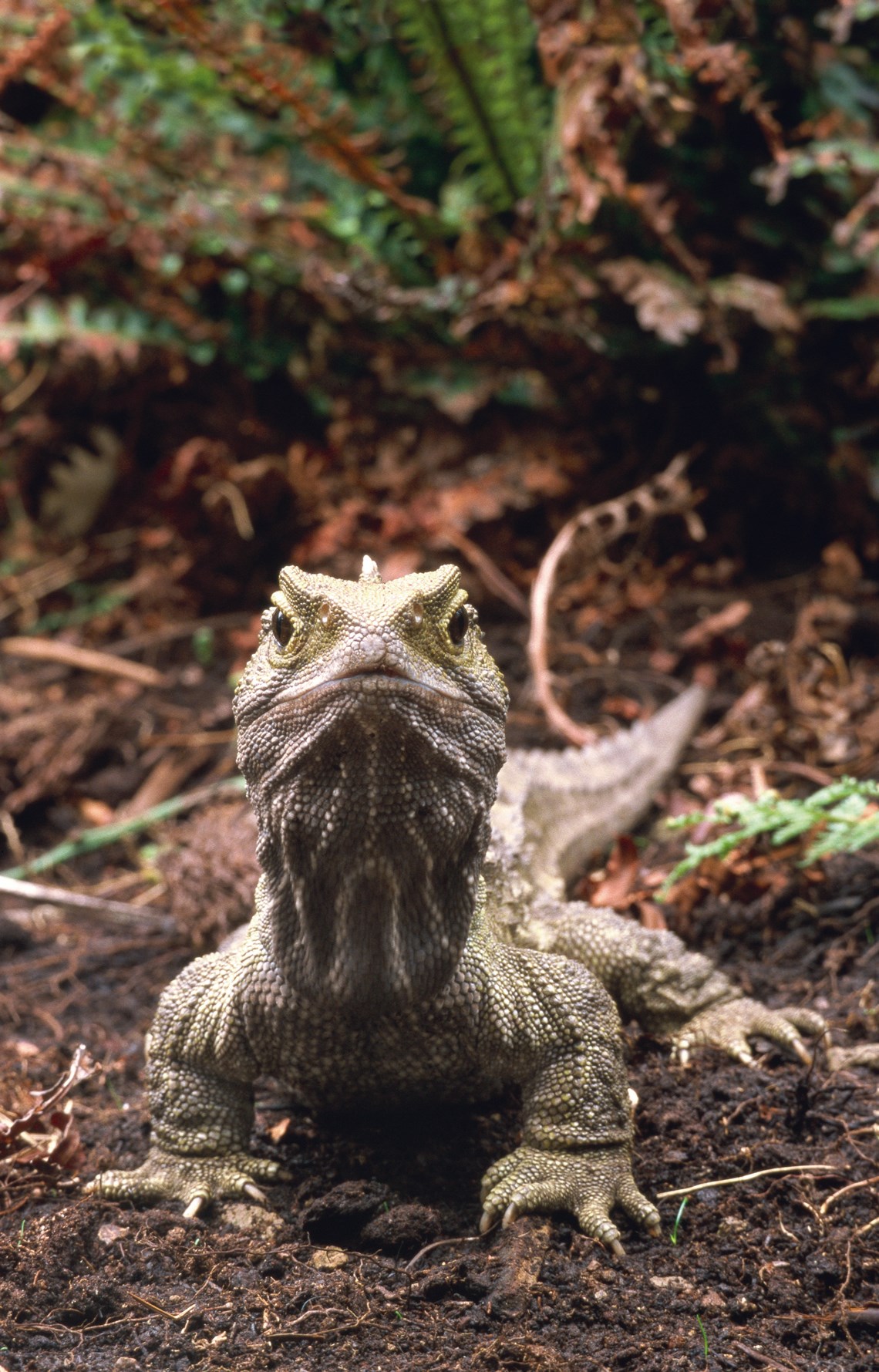A group of researchers has found evidence of acoustic communication in 53 species of animals that had until now been considered silent. Their sound recordings cover 50 species of turtle; one caecilian species, an amphibian popularly known as the blind snake; the tuatara, a reptile endemic to New Zealand; and one species of lungfish, the piramboia, found in rivers of the Amazon and Pantanal. These different animals have in common a physical characteristic called choanae, cavities on either side of the throat that connect the nostrils to the larynx, an organ that functions as part of the respiratory system and is where the sounds are produced.
According to an article published at the end of October in the scientific journal Nature Communications, this new evidence is an indication that, in vertebrates, the exchange of information through the emission of sounds may have arisen more than 407 million years ago, during the Devonian Period. The last common ancestor of all vertebrates endowed with these cavities and lungs would have lived during this geological period. The first four-limbed terrestrial vertebrates (tetrapods), a group that now includes mammals, reptiles, birds, and amphibians, originated from lungfish that had bony fins and probably lived at this time. The piramboia is one of six extant species that belong to this group of ancient air-breathing fish.
By this hypothesis, the ability to communicate by sound would have appeared only once in the evolutionary process, among fish with lungs, during the Devonian. At that time the nascent tetrapods would have inherited not only these respiratory structures from their aquatic ancestors, but also the ability to send messages by sound. Some authors, however, support the idea that acoustic communication emerged several times and independently among the various groups of terrestrial vertebrates, a process that biologists call convergent evolution.

Kevin Schafer / Getty ImagesTuatara (Sphenodon punctatus), a reptile native to New Zealand with a lineage distinct from that of lizards, whose vocalization was recorded in the current studyKevin Schafer / Getty Images
The new study’s primary author, Brazilian biologist Gabriel Jorgewich-Cohen explains that sound communication can be defined as an acoustic interaction between at least two animals that is mediated by signals and governed by rules. “Noises produced accidentally are considered ‘side effects’ of other behaviors and don’t count as communication,” clarifies Jorgewich-Cohen, who studies evolution as a doctoral student at the University of Zurich, in Switzerland. “Therefore, we don’t consider coughs, burps, and other unwanted sounds that don’t convey a message to be communication.”
The team found that the studied species communicate with a varied repertoire of sounds, which includes grunts, chirps, snorts, and other types of noise. Some species “talk” several times a day, while others are quieter. Males make sounds to court females and defend their territory.
The audio and video recordings were conducted with captive animals in plastic pools, in order to guarantee that all the sounds captured were emitted by the animals under study. Each species was recorded for at least 24 hours, covering both its diurnal and nocturnal activities. The underwater sounds were obtained using OceanBase, a monitoring device developed by the Acoustics and Environment Lab at the Polytechnic School of the University of São Paulo (Poli-USP) in partnership with the company Bunin Tech. Before recording the species’ vocalizations, the system was used to capture the ambient sound without the presence of any animal to account for possible noise or interference.
Biologist Lucas Forti, from the Federal Rural University of the Semi-Arid Region (UFERSA), who was not involved in the study, notes that acoustic signals allow fundamental social interactions, such as those involved with reproduction and territoriality. Their success is decisive in the survival of the organisms involved. He observes that there is still great uncertainty about the evolutionary origins of acoustic communication between vertebrates. “This is largely due to the lack of behavioral evidence regarding acoustic communication in certain taxonomic groups,” explains Forti. “Contrary to what the authors maintain in this new study, previous evidence, based on phylogenetic and anatomical features of tetrapods, indicated that this behavior had arisen independently in different types of animals.” An article by biologists Zhuo Chen and John J. Wiens, from the University of Arizona, in the United States, published in 2020 in Nature Communications, suggests that sound communication arose multiple times, independently, in different groups of vertebrates over the last 200 million years.
However, Jorgewich-Cohen points out that other studies agree with the hypothesis that acoustic communication has one unique, ancient evolutionary origin. “Although they have a large variety of anatomical mechanisms capable of producing sound, all lineages of tetrapods and lungfish have lungs as the physical source of their vocalization behaviors,” comments the biologist. “In our article, we revised the analysis done by Chen and Wiens and included evidence from the species whose sounds we were the first to record. In doing so, we saw that the more complete data favored our hypothesis.”
Forti says his Brazilian colleague’s study represents an important contribution to the advancement of knowledge regarding the origins of communication through sound among terrestrial vertebrates. “The research is a great motivator to explore—in more detail—the use of acoustic signals by several animals that have not yet had their behavioral repertoires studied,” comments the UFERSA researcher. Now, Jorgewich-Cohen is working on articles that describe in detail the acoustic repertoire of selected species and, in the near future, he intends to dedicate himself to studies of bioacoustics and cognition in reptiles.
Scientific articles
JORGEWICH-COHEN, G. et al. Common evolutionary origin of acoustic communication in choanate vertebrates. Nature Communications. Oct. 25, 2022.
CHEN, Z. & WIENS, J. J. The origins of acoustic communication in vertebrates. Nature Communications. jan. 17, 2020.
